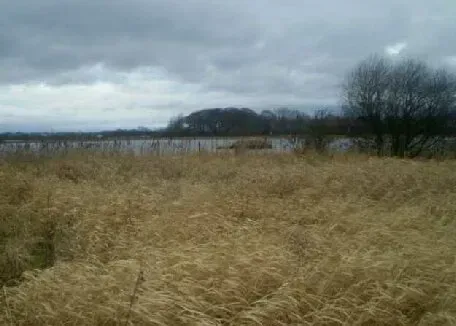Holywell Ponds & Dene
Holywell Dene (originally named Merkel Dene), is situated in south east Northumberland and follows the course of Seaton Burn for over six kilometres from Seghill, through to Seaton Sluice where the Burn enters the sea.
Holywell Pond
The section from east from the old railway viaduct to Seaton Sluice was designated a Local Nature Reserve in 2003.Britain's first Yellow-browed warbler was recorded (or rather shot) here by Hancock (of Hancock museum fame).The woods hold many common woodland species and rarities are still recorded.
Holywell pond is a result of mining subsidence and is surrounded by grassland. The main interest is ornithological, in particular over-wintering migrant species which are attracted by the pond's proximity to the coast. Breeding species include little grebe, pochard, greylag goose and sedge warbler. Goose numbers grow during the winter when they are also joined by wildfowl including wigeon, goldeneye and tufted duck. Passage species include greenshank and green sandpiper, and there have been plenty of rarities recorded over the years such as Collared Pratincole.
Location and access: Car parking is in the nearby housing estate. Please do not obstruct residents’ access. There is a public hide, adapted for wheelchair use and a member’s hide, for which keys are available from the Northumberland Wildlife Trust Office. To get there, turn east off the A192 in Holywell Village and park in the housing estate. Walk to the reserve along the narrow, high fenced path between the houses then around the field margin to the reserve. Most birds can be seen from the public hide and footpath skirting the reserve. Permits are needed to visit other parts of the reserve. It is not possible to walk around the pond.
There are two hides on site, including a public hide 200m right from the gate which is open at all times and a member only hide.
Birds you may see at Holywell Ponds
A very good all year round site with resident birds being joined by summer migrants. Given the site's proximity to the North Sea, literally anything is possible at times of autumn migration, especially scarce waders and terns.



